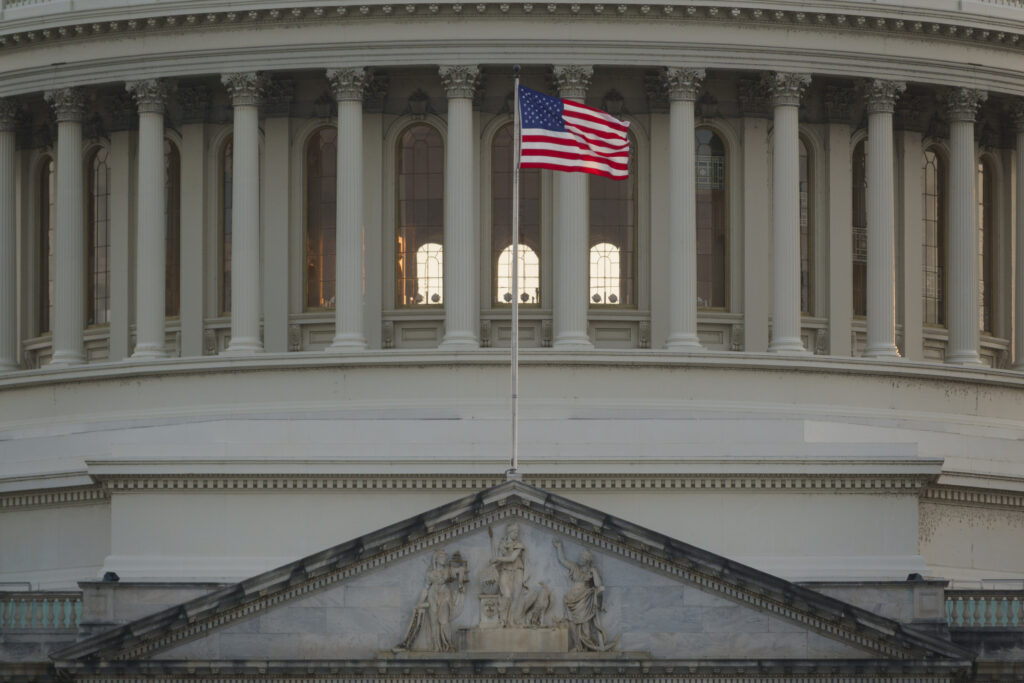The Department of Government Efficiency (DOGE) is reportedly using a newly developed artificial intelligence (AI) tool to accelerate the rollback of federal regulations, with a stated goal of eliminating 50 percent of all federal rules by the first anniversary of President Donald Trump’s second inauguration, according to a Saturday report from The Washington Post.
Internal documents reviewed by the newspaper, along with interviews with four government officials familiar with the project, reveal an ambitious timeline and a wide-ranging use of the tool across various agencies.
Newsweek has reached out to the White House for comment via email on Saturday.
Why It Matters
DOGE was created by Trump through an executive order to improve efficiency and reduce waste in the federal government. It was led by billionaire Elon Musk who departed the administration in May.
The reported plan represents one of the most aggressive attempts by the Trump administration to overhaul the federal regulatory system. By automating the deregulation process, the administration aims to reduce government spending and compliance burdens significantly.
However, the use of AI to interpret complex legal language and determine regulatory necessity raises legal and practical concerns, particularly regarding accuracy, oversight, and the future role of civil servants in shaping public policy, according to the Post.
What to Know
The “DOGE AI Deregulation Decision Tool,” developed by engineers brought into government under Elon Musk’s DOGE initiative, is programmed to scan about 200,000 existing federal rules and flag those that are either outdated or not legally required.
According to a PowerPoint presentation dated July 1 that was obtained by the newspaper, the tool estimates that approximately 100,000 of those rules could be eliminated, primarily through automation with minimal human input. The projection claims this could save trillions in compliance costs and spark increased external investment.
At the Department of Housing and Urban Development (HUD), AI has already reviewed over 1,000 regulatory sections in under two weeks. Similarly, it was responsible for “100% of deregulations” at the Consumer Financial Protection Bureau (CFPB), according to the PowerPoint presentation. The Post, however, reported it was not able to confirm the use of AI at the agency independently.
When asked about the use of AI for deregulation, White House spokesman Harrison Fields emphasized to the newspaper that “all options are being explored” to meet the president’s deregulation goals. He clarified that no single plan has been finalized, and the effort is still in early, creative stages with ongoing consultation within the White House.
DOGE plans to complete agency-specific deregulation lists by September 1 and finish nationwide rollout by January 20, 2026—labeled in internal documents as “Relaunch America.” Agencies are currently receiving training on how to integrate the AI tool into their regulatory review process. The presentation claims the tool could save 93 percent of the labor typically required to gut federal rules, reducing what would usually take 3.6 million work hours to just 36.
Despite these goals, some federal employees expressed concern about accuracy. One HUD employee told the Post that the AI misinterpreted statutes and flagged legal language as non-compliant when it was accurate. HUD confirmed to the newspaper that while the agency is exploring AI to streamline efficiency, the system is not intended to replace expert judgment.
The push to eliminate regulations is not new for Trump. In January, he issued an executive order mandating the repeal of 10 rules for every new one added. Departments like Transportation and Labor have already reported dozens of regulatory cuts. However, experts question whether such repeals will withstand scrutiny under the Administrative Procedure Act, which governs the legal process for rescinding rules. Previous attempts to bypass procedural safeguards—such as Trump’s reversal of showerhead regulations—have faced legal scrutiny.
DOGE’s lawyers have reportedly vetted the tool, but concerns remain about whether its recommendations will be upheld in court or trusted by the private sector.
While DOGE initially tried to play a leading role in the deregulation campaign, internal resistance from federal employees has slowed momentum. Agencies questioned DOGE’s subject matter expertise and hesitated to outsource rulemaking authority to a third-party system. Moreover, the administration’s efforts to downsize the federal workforce have hampered its ability to implement the deregulation strategy.
What People Are Saying
Nicholas Bagley, a law professor at the University of Michigan, told The Washington Post about Trump’s unilateral efforts to cut regulations: “There’s been some flashy sideshow efforts to avoid the legal strictures, but in general, they don’t stick.”
White House spokesman Harrison Fields wrote in an email obtained by The Washington Post: “The DOGE experts creating these plans are the best and brightest in the business and are embarking on a never-before-attempted transformation of government systems and operations to enhance efficiency and effectiveness.”
What Happens Next?
Over the next several months, agencies will use the DOGE AI tool to select rules for repeal, respond to public comments, and finalize deregulation plans.
Whether the courts, the public, and the agencies themselves accept that transformation remains uncertain.
Read the full article here

















